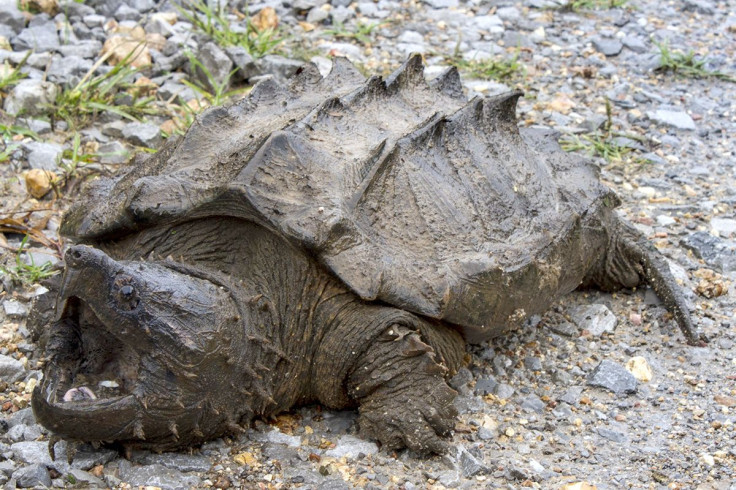Scientists Find Rare Wild Alligator Snapping Turtle, Lose Creature Again

There might be hope for an endangered species after scientists found a new alligator snapping turtle in the wild for the first time in decades — and then lost track of it.
The 22-pound turtle was found in southern Illinois, only the second wild animal of its species found in that state in 50 years. The researchers put a radio transmitter on the turtle’s back to track her but the battery on that transmitter has died, so it’s hard to know where the wild creature is.
It might be that the newly found -- and then lost -- creature is a sign that others of its endangered kind remain, or it could be the last one left in the wild.
“Finding this individual does not indicate that there is a functional, stable population of wild alligator snapping turtles in Southern Illinois,” study co-author Ethan Kessler said in a statement from the University of Illinois. “When a population dies out, a single turtle may wander around like a zombie waiting for the end of its days.”
The group reported its discovery in the journal Southeastern Naturalist, saying it happened in a tributary of the Mississippi River called Clear Creek, in roughly the same area where the last few alligator snapping turtles were found a long time ago.
“It is possible that this region provides the last accessible, suitable habitat for this species in Illinois,” the study says. “Populations have experienced range-wide declines over the past century, and records of this species have become increasingly rare in the northern portion of its range,” which is southern Illinois.
Clear Creek flows through southwestern Illinois, including through the Trail of Tears State Forest, and is connected to the Mississippi River, which runs along the entire western border of Illinois, separating it from Missouri in the southern part of the state and Iowa in the north. Although the river is named for Mississippi, it runs a winding path through or on the border of several states, starting in Minnesota, going down past Wisconsin, Iowa, Illinois, Missouri, Kentucky, Tennessee, Arkansas and Mississippi, and dumping into the Gulf Of Mexico at Louisiana. It is the fourth-longest river in the world.
According to the University of Illinois, a herpetologist from the Illinois Natural History Survey found the wild turtle while diving and looking for another that had been released into the wild as part of an effort to increase the population of the species, which is endangered in Illinois and threatened in the U.S.
“I was just about out of breath when I felt the turtle shell,” Chris Phillips said. “I thought I had found the male turtle I knew was there because I detected its radio signal. I felt along its back to where I thought the shell should end, but my hand just kept going.”
What he found was a wild female alligator snapping turtle that was 15 inches long — double the size of the target of his search. A DNA analysis showed the newly found creature was a resident of that area.
Finding wild animals is important in determining conservation efforts, because scientists have to know whether to focus on protecting an existing population of turtles or on reintroducing more of them to the wild to increase their numbers.
“Bolstering a hidden population of an endangered species is better than starting a new population in the area,” Kessler said in the university statement. “However, since no wild alligator snapping turtles have been found in Illinois since 1984, reintroduction efforts make sense.”
Although the wild turtle’s radio transmitter battery is dead, the scientists will know if they find her again because it could still be attached to her back, and they put a notch in her shell to mark her. But because these turtles spend their days underwater, it will be hard to find her again.
© Copyright IBTimes 2024. All rights reserved.





















